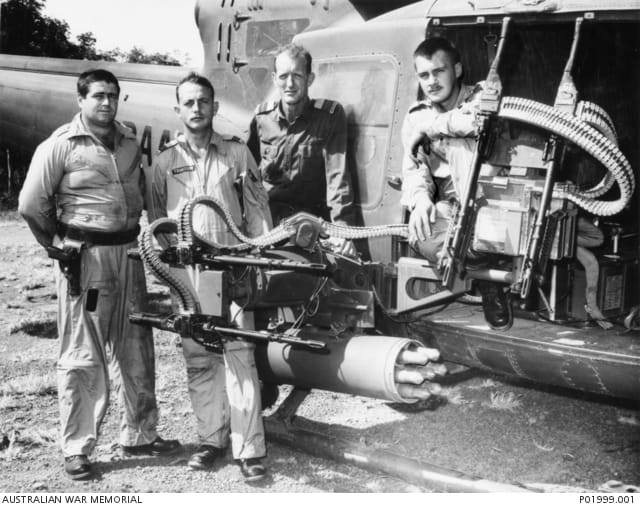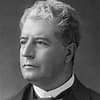
9 Sqn Team Fit Armament to Ned Kelly.
In 1968, amidst the backdrop of the Vietnam War, the No. 9 Squadron of the Royal Australian Air Force (RAAF) introduced a groundbreaking modification to their UH-1B Iroquois helicopter, designated A2-1025 and affectionately known as “Ned Kelly.” This particular aircraft marked a significant milestone as it became the first RAAF helicopter to undergo a trial armament system enhancement, a crucial development in the ongoing conflict.
The innovative armament system integrated into the UH-1B included an XM 157 airborne rocket pod on each side of the helicopter. Each pod housed seven 2.75-inch Folding Fin Aircraft Rockets, providing the helicopter with a potent and versatile airborne firepower capability. Complementing the rocket pod were twin side-mounted M60 C machine guns, capable of unleashing a formidable barrage with a rate of fire reaching 6000 rounds per minute, utilizing 7.62mm ammunition.
Further enhancing the helicopter’s offensive capabilities were twin door-mounted M60 machine guns, strategically positioned to deliver a concentrated and suppressive stream of firepower. These door-mounted machine guns had the capacity to fire 400 rounds of ammunition, adding a dynamic and responsive element to the helicopter’s arsenal.
The introduction of this armament system represented a collaborative effort by a dedicated project team, whose members played integral roles in its development and implementation. Among them were notable individuals such as Sergeant Ernest E. Moore, Flight Lieutenant Robert C. Thompson, and Leading Aircraftman Edward G. Maxwell, the armament fitter kneeling in the helicopter doorway. Squadron Leader James H. Cox, serving as the pilot, stood beside the helicopter, embodying the skilled and courageous aviators who operated these modified gunship helicopters in the challenging and often hostile environment of the Vietnam War.
The “Ned Kelly” UH-1B Iroquois, with its advanced armament system and the skilled crew at its helm, symbolized the continuous innovation and adaptability displayed by military forces during the Vietnam War. This technological advancement contributed significantly to the evolving tactics and strategies employed in the conflict, showcasing the commitment of the RAAF to enhance the capabilities of their helicopters for the demanding conditions of aerial combat in Vietnam.



